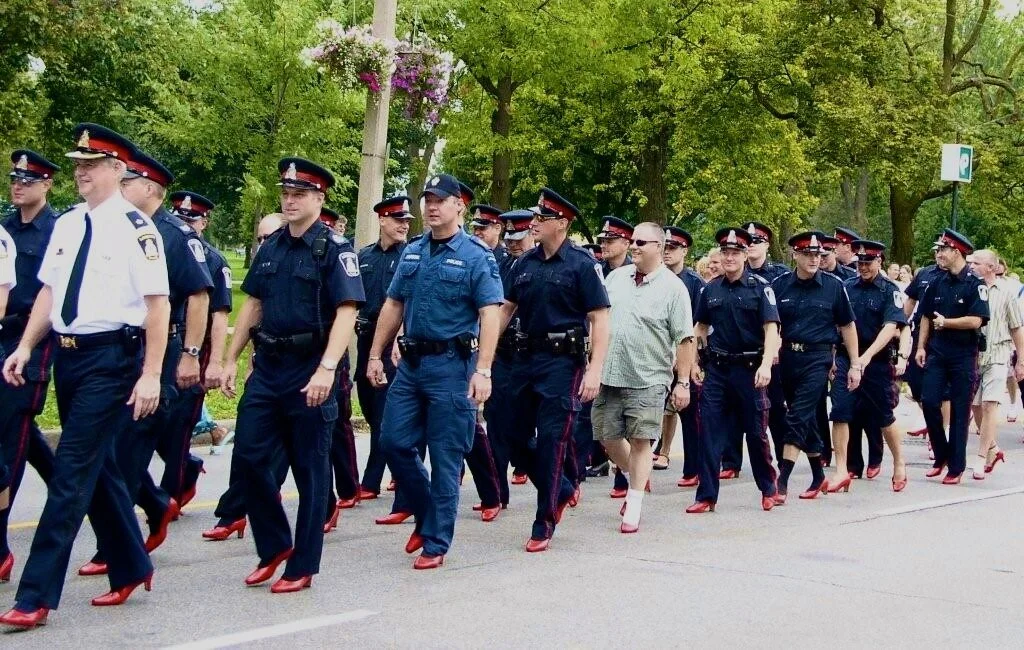Select & Secure a Walk Site & Route
Select and secure a Walk site and route as soon as possible after forming your Planning Committee. This detail is important to take care of early in your planning process because you may need to obtain official permits, and your outreach materials need to include where the march will take place.
Pre-Visualize Your Event
Before beginning your search for an appropriate Walk site, have your Planning Committee envision every aspect of the day of the Walk, from start to finish. Imagine:
Volunteers coming to set up the stage and sound
Placing your signature logo on the front of the podium
Representatives from other agencies arriving to set up information tables
Spokespersons arriving wanting to go over the program
Media arriving and looking for the best place to set up and for people to interview
Music playing while Walkers park and make their way to the Walk site
Signing Walkers in and getting them ready to go
Giving media interviews
Delivering the opening program
Organizing people in order of men in heels, other men, women, youth, and children
A drum core motivating Walkers and increasing the excitement
Walking along the Walk route
Documenting the Walk.
Responding to cheers and jeers along the Walk route
Welcoming the Walkers back with cheers, cameras, and music
Giving your closing remarks
Massage for aching feet
Cleaning up and going home
Now that you’ve seen the entire Walk take place in your mind’s eye, you’ll be better prepared to select an appropriate Walk site and move quickly through the rest of the planning process.
Choosing a Location
Choose a location that is centrally located, easy to get to by bus or car, and will help you achieve all elements of your Walk vision. Site considerations include:
Handicap accessibility
Parking area, or street parking, large enough to handle your expected audience/Walkers
Accessible electricity (or you may need to rent a generator – which is noisy but efficient)
Restrooms and their location
A space large enough to accommodate your stage area, audience and tablers/vendors adjacent to the point where your Walk will commence
Roads or footpaths that circle back to a starting point and are about (or at least) one mile in length (preferably visible to the general public). In most cases, your Walkers will proceed spread out along footpaths or two-by-two along public sidewalks. If you are planning a larger Walk, you will need to arrange for road closures for the greatest degree of public safety.
A suitable staging area that will look good through the lens of a camera (video and still)
Permits, Permission & City/School/Community Support
Contact a friendly City Councilmember’s office for assistance once you have determined your Walk location and route. Present the Walk idea. If they are amenable to it, they may be able to help you to:
Obtain necessary permits for use of the location
Waive permit fees
Liaison with police officials regarding the Walk route
Secure risers and/or podiums.
Be sure to thank elected officials publicly during your program (and any other reasonable way possible) for any assistance they are able to offer.
Obtain a Permit. If an elected official is not supportive of the Walk, their deputies or field representatives may still be able to help you identify where to obtain proper permits. In this case, you will need to follow up with the government agency in your area that is responsible for issuing public use permits for the location you have chosen. In most cases, you will need to fill out a relatively simple form and may need to pay a small fee. Again, take care of this early to avoid any problems further along your planning process.
Contact Local Law Enforcement to inform them of your Walk route. If you live in a large urban area, you will need to contact the law enforcement division that is responsible for policing the area that includes your Walk site and route. Inform them of your Walk route. In most cases, law enforcement will want answers to the following questions:
Q: Will you be able to ensure that Walkers will obey all traffic lights and laws
A: (When you are not requesting road closure) We will have trained volunteer security to assist Walkers along the Walk route. Walkers will stick to the sidewalk or posted walkways (optional as needed: and will Walk double file) in a way that will allow other pedestrians to use the walkway as well.
A: (When you are requesting road closure) We are requesting that the roads along our route be closed for the duration of the Walk (have times available). Walkers will stick to the road on the stated route and will be managed by trained volunteer security.
Q: Are counter-demonstrators expected to show up and oppose the Walk message?
A: Extremely unlikely. The message is simply that men can be more involved in helping end sexual violence. This event has been held worldwide since 2001 and in that time only 3 of 3,000+ events have had counter demonstrators.
Q: What organization is sponsoring this Walk?
A: Name of your organization.
Q: What is the name of the contact person, or person responsible for this Walk?
A: Name of the authorized contact person and how they can be reached on the day of the Walk.
Reserve or Secure Equipment
The next step in your planning process is to obtain, reserve, or make arrangements to borrow all of the equipment you will need to support your Walk. More specifically, you will need:
Raised Stage – large enough to accommodate the maximum number of people you will have on stage at any given time
Sound System – able to project sound in an outdoor area setting to the number of people you expect to attend the Walk; e.g. two raised speakers, amplifier, microphone, and a sound generator (if necessary)
Podium – sturdy enough to hold your signature/logo sign on the front (a music stand or the like is not recommended)
Chairs – for speakers
Tables and Chairs – for Walk check-in, media check-in, Walk merchandise and flyers, representatives from friendly agencies who are tabling your event.
Bull Horns – one for about every fifty to seventy-five people.
Walkie Talkies or Personal Communicators – for Walk personnel, including security.
Clip Boards – one for each coordinator present on the day of the event, plus additional clipboards to be used to sign up volunteers and/or document your Walk.
Posterboard and poles or stakes for signs
Duct Tape
Scissors
Rope
Safety Pins
Pens
Extension Cords
Security Identification (armbands, sashes, etc)
There are many ways to creative ways to minimize the amount of money you need to commit to equipment needs. We recommend that you attempt to secure these items without paying for them (legally, of course). As mentioned above, friendly City Council members in your area may be able to provide you with a raised stage and podium free-of-charge. Look to friendly civil rights organizations, other community leaders, churches and friends to help you locate the other items on your list.
Arrange for the delivery and/or pick-up of all equipment both prior to and following the Walk. Your Logistics Coordinator will be responsible for checking and double-checking that each item will responsibly show up when and where it is required.
9-14-08 - London, ON, Canada

